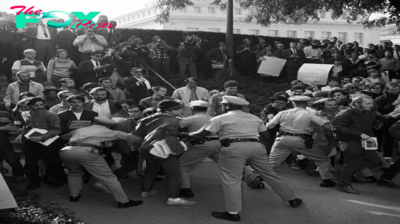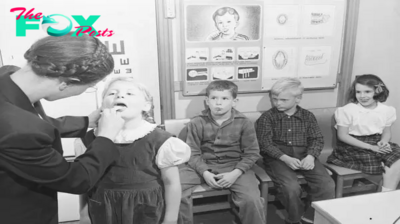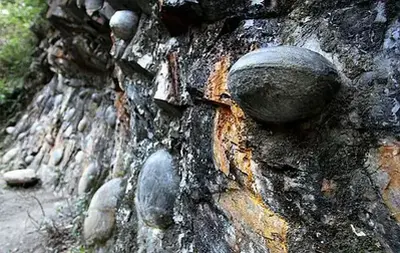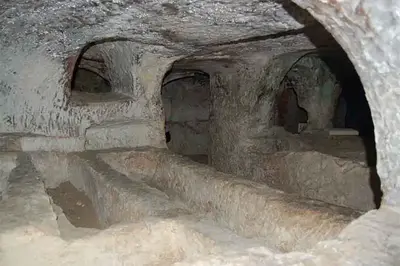History
Insideh The Freezing Facility Of 200 Bodies Waiting To Be Revived: The Youngest Patient Is Only 2 Years Old
The heads and bodies of hundreds of patients have been sent to the US for preservation by freezing to wait for the day to be revived.
In the 1960s, Science crossed the threshold of finding immortality thanks to body freezing techniques that stopped the process of disfiguring the body after death so that it could hopefully be resurrected later.
In 1972, after watching a children’s Science fiction show called Time Slip about frozen characters, Mr. Max More came up with the idea of freezing human bodies to wait. “revival”. This is an important premise for his later contributions to medicine.
Currently, Mr. More is the former CEO of Alcor and the Ambassador and Honorary President of the Alcor Life Extension Foundation, one of the world’s largest human freezing centers. There are also two other centers: Cryonics Institute in the US (founded in 1976) and KrioRus Company in Russia (founded in 2005).

Alcor Life Extension Center in Scottsdale, Arizona, USA – Photo: Murray Ballard
According to Reuters reporter Liliana Salgado, so far, 199 people have sent their heads and bodies to be frozen for preservation at the Alcor facility in the hope of being able to revive them in the future. By preserving the body at temperatures below 0 degrees Celsius, Alcor’s goal is to restore good health with future medical Technology. Cylindrical tanks filled with liquid nitrogen store patient heads and bodies along with 100 Pets.
Specifically, cryopreservation begins as soon as a person is declared dead. At this point, their organs have not yet decomposed. The freezing team that had been waiting a week before quickly moved the bodies to an ice bath and replaced their blood with an organ preservation solution. After patients arrive at Alcor’s facility, staff inject antifreeze, chemicals that prevent the formation of ice crystals that can destroy organs, into their blood vessels. Alcor cools the body at -196 degrees Celsius and stores it in a liquid nitrogen tank.
Former Alcor CEO Max More once said, medicine and medicine are always evolving. The incurable diseases of today can be cured tomorrow. Freezing bodies is a way to bridge the gap between those two timelines.

Liquid nitrogen tanks for the preservation of dead bodies at the Alcor . Life Extension Association
“We see it as an extension of first aid. The center only takes over patients when today’s medicine has run out. Think of it like this: 50 years ago, if a person stopped breathing while running. walking, you’ll always conclude they’re dead. Today, we don’t do that anymore. Instead, we do CPR, do first-aid procedures… People who died 50 years ago It could have been saved. Freezing works the same way, we’re just preventing them from getting further harmed, until there’s a cure.”
Alcor’s customers come from all over the world. Under ideal conditions, the center will predict the patient’s time of death. Experts create a list of members with serious illnesses, tracking the progress of their health. When the time of “life and death” nears, they send a backup team to the bedside and wait.
In fact, it is not at this point that the frozen preservation of the body is of interest. The first person to be frozen by the method of preserving the body was psychologist James H. Bedford, who died in 1967 at the age of 73 from kidney cancer. Bedford’s body was covered with ice and handled by experts from the California Frozen Society. Currently, his body is lying in an Alcor tank.

Two people kept at Alcor include a 2-year-old Thai girl who died of brain cancer and Hal Finney, a computer scientist and bitcoin investor.
During the first seven minutes after Mr. Bedford died, doctors carried out preservation measures to prepare him for a new life. First, people performed CPR on Bedford to maintain oxygen circulation to the brain while DMSO (Dimethyl Sulfoxide) was injected intravenously to replace blood and tried to keep the internal organs from cooling down. His body was then placed on ice in a metal tube containing liquid nitrogen and taken to a refrigeration facility in Arizona.
Since then, Mr. Bedford has become the first person to be frozen with a liquid nitrogen compound and ready to be revived when humanity finds a cure for cancer.
The youngest patient in Alcor is Matheryn Naovaratpong, a 2-year-old Thai girl with brain cancer, which has been frozen since 2015. Her parents are both doctors. Matheryn has undergone many brain surgeries but failed.
Some other famous patients waiting to be revived include software developer and Bitcoin pioneer Hal Finney who died in 2014 from ALS; Rugby player Ted Williams died in 2002 from heart disease complications…
However, some medical experts expressed skepticism about the method of freezing human corpses.

Liquid nitrogen tanks to preserve human corpses for many years – Photo: GOST
Shannon Tessier, a cryogenic biologist at Harvard University in the US, said: “At the moment, there is absolutely no way to freeze the whole body to -196 degrees Celsius without breaking it. complete destruction of tissues”.
According to Ms. Shannon, when the scientists frozen samples of living human tissue, such as a slice of liver, the cell membrane was completely destroyed. The freezing process failed because current Science has not been able to achieve the perfect body preservation as humanity expected.
Dr Joao Pedro de Magalhaes, a biologist at the University of Liverpool, said: “The freezing process seriously damages the body’s cells. Even under optimal conditions such as storage, immediately after death, there are challenges.
For example, antifreeze will adversely affect the tissues of the body with long-term exposure. The chance of a cryopreserved body coming back to life is low, but it’s not impossible.”

Medical professionals prepare medicines for patients before freezing – Photo: GOST
Overall, although there is no evidence that freezing is effective, advocates cite many scientific achievements in which sperm, embryos, and stem cells have been successfully frozen and thawed. In 2016, the team at 21st Century Medicine frozen and thawed rabbit brains without causing structural damage.
Currently, the cost of freezing a whole body in Alcor costs at least $200,000 and preserving the brain costs $80,000. However, no one knows for sure when it will be possible to wake the patients. Asked about that time period, the head of Alcor gave the number between 50 and 100 years.
-

 History21h ago
History21h agoThe Protests That Anticipated Today’s Gaza Solidarity Encampments
-

 History1d ago
History1d agoCampus Protests Are Called Disruptive. So Was the Civil Rights Movement
-

 History2d ago
History2d agoTo Address the Teen Mental Health Crisis, Look to School Nurses
-

 History2d ago
History2d agoThe Surprising Face of German Anti-Immigration Policies
-

 History4d ago
History4d agoIt’s Not Just This Year’s Met Gala Theme. All Art Is About the Passage of Time
-

 History5d ago
History5d agoRacing Needs to Reckon With the Kentucky Derby’s Roots in Slavery
-

 History6d ago
History6d agoThe Man Who Made Ronald Reagan ‘See Red’ Is Still in Power
-

 History1w ago
History1w agoArizona’s Abortion Ban Never Represented the Will of the People—Even in 1864


























